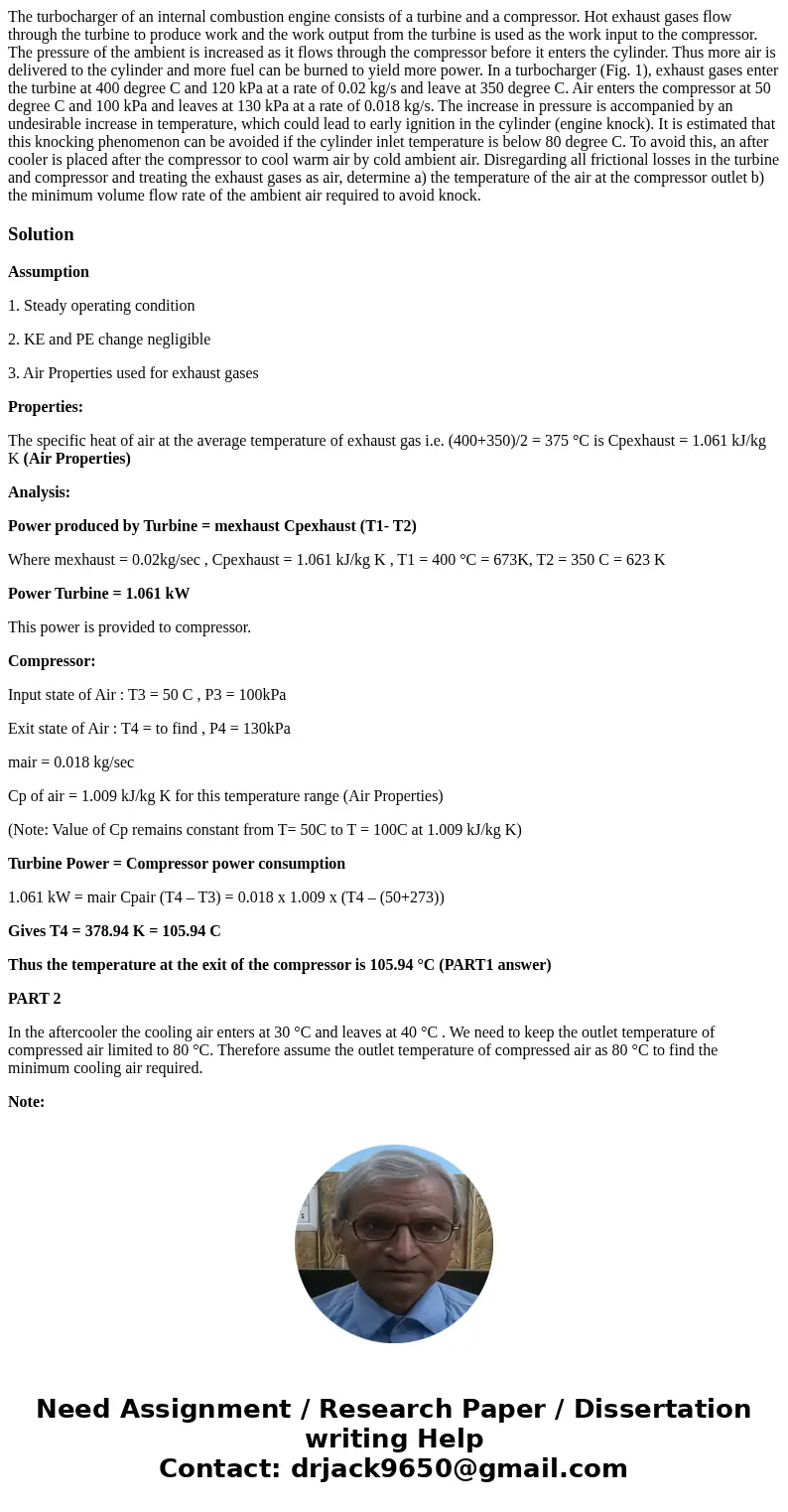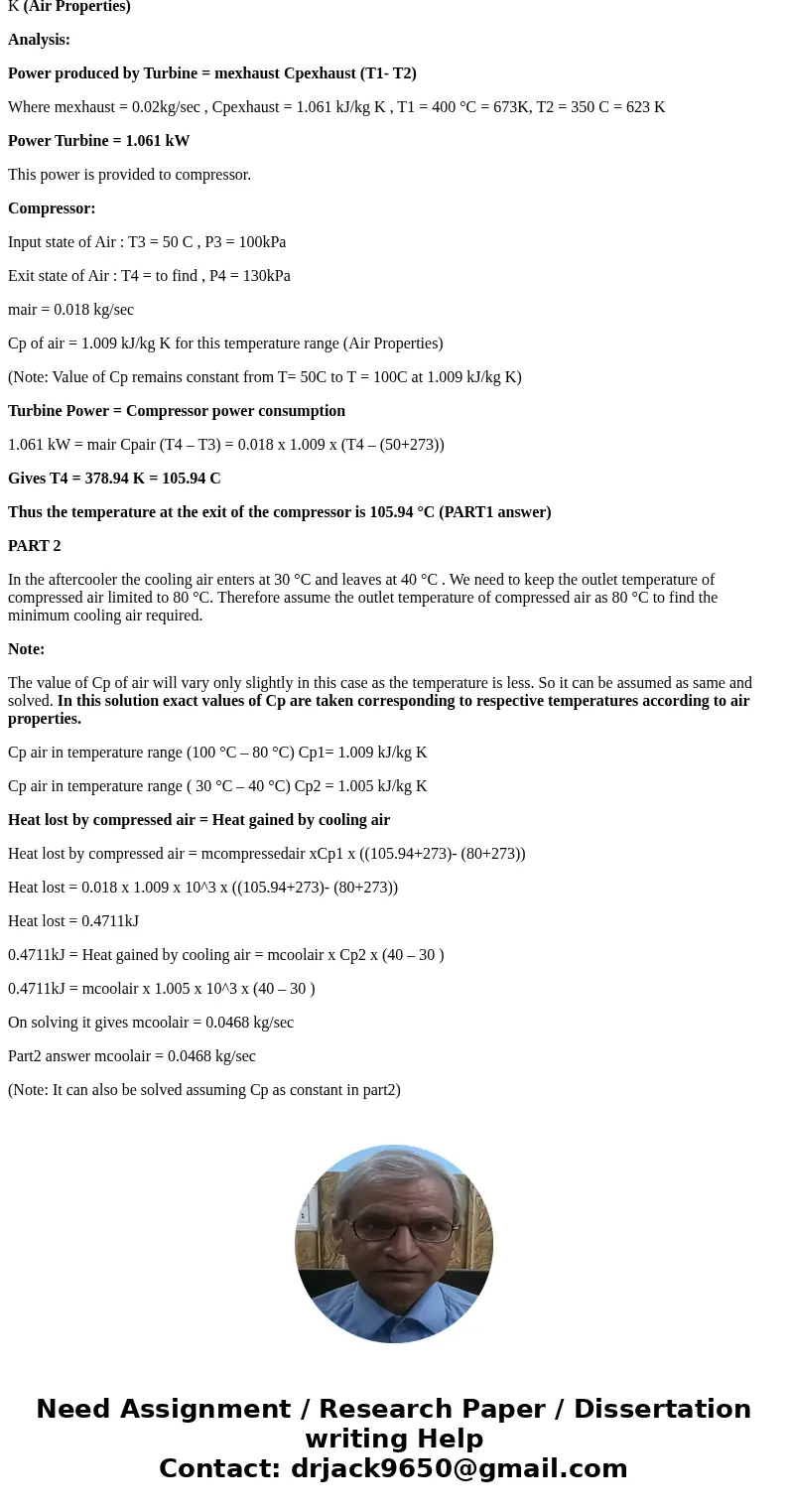The turbocharger of an internal combustion engine consists o
Solution
Assumption
1. Steady operating condition
2. KE and PE change negligible
3. Air Properties used for exhaust gases
Properties:
The specific heat of air at the average temperature of exhaust gas i.e. (400+350)/2 = 375 °C is Cpexhaust = 1.061 kJ/kg K (Air Properties)
Analysis:
Power produced by Turbine = mexhaust Cpexhaust (T1- T2)
Where mexhaust = 0.02kg/sec , Cpexhaust = 1.061 kJ/kg K , T1 = 400 °C = 673K, T2 = 350 C = 623 K
Power Turbine = 1.061 kW
This power is provided to compressor.
Compressor:
Input state of Air : T3 = 50 C , P3 = 100kPa
Exit state of Air : T4 = to find , P4 = 130kPa
mair = 0.018 kg/sec
Cp of air = 1.009 kJ/kg K for this temperature range (Air Properties)
(Note: Value of Cp remains constant from T= 50C to T = 100C at 1.009 kJ/kg K)
Turbine Power = Compressor power consumption
1.061 kW = mair Cpair (T4 – T3) = 0.018 x 1.009 x (T4 – (50+273))
Gives T4 = 378.94 K = 105.94 C
Thus the temperature at the exit of the compressor is 105.94 °C (PART1 answer)
PART 2
In the aftercooler the cooling air enters at 30 °C and leaves at 40 °C . We need to keep the outlet temperature of compressed air limited to 80 °C. Therefore assume the outlet temperature of compressed air as 80 °C to find the minimum cooling air required.
Note:
The value of Cp of air will vary only slightly in this case as the temperature is less. So it can be assumed as same and solved. In this solution exact values of Cp are taken corresponding to respective temperatures according to air properties.
Cp air in temperature range (100 °C – 80 °C) Cp1= 1.009 kJ/kg K
Cp air in temperature range ( 30 °C – 40 °C) Cp2 = 1.005 kJ/kg K
Heat lost by compressed air = Heat gained by cooling air
Heat lost by compressed air = mcompressedair xCp1 x ((105.94+273)- (80+273))
Heat lost = 0.018 x 1.009 x 10^3 x ((105.94+273)- (80+273))
Heat lost = 0.4711kJ
0.4711kJ = Heat gained by cooling air = mcoolair x Cp2 x (40 – 30 )
0.4711kJ = mcoolair x 1.005 x 10^3 x (40 – 30 )
On solving it gives mcoolair = 0.0468 kg/sec
Part2 answer mcoolair = 0.0468 kg/sec
(Note: It can also be solved assuming Cp as constant in part2)


 Homework Sourse
Homework Sourse